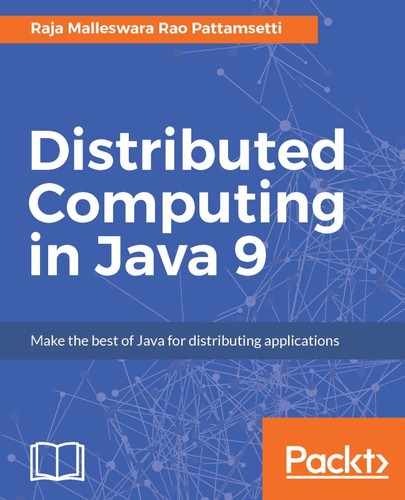Distributed computing is the concurrent usage of more than one connected computer to solve a problem over a network connection. The computers that take part in distributed computing appear as single machines to their users.
Distributing computation across multiple computers is a great approach when these computers are observed to interact with each other over the distributed network to solve a bigger problem in reasonably less latency. In many respects, this sounds like a generalization of the concepts of parallel computing that we discussed in the previous section. The purpose of enabling distributed systems includes the ability to confront a problem that is either bigger or longer to process by an individual computer.
Distributed computing, the latest trend, is performed on a distributed system, which is considered to be a group of computers that do not stake a common physical clock or a shared memory, interact with the information exchanged over a communication (inter/intra) network, with each computer having its own memory, and runs on its own operating system. Usually, the computers are semi-autonomous, loosely coupled and cooperate to address a problem collectively.

Examples of distributed systems include the Internet, an intranet, and a Network of Workstations (NOW), which is a group of networked personal workstations connected to server machines represented in the diagram above. Modern-day internet connections include a home hub with multiple devices connected and operating on the network; search engines such as Google and Amazon services are famous distributed systems. Three-dimensional animation movies from Pixar and DreamWorks are other trendy examples of distributed computing.
Given the number of frames to condense for a full-length feature (30 frames per second on a 2-hour movie, which is a lot!), movie studios have the requirement of spreading the full-rendering job to more computers.

In the preceding image, we can observe a web application, another illustration of a distributed application where multiple users connect to the web application over the Internet/intranet. In this architecture, the web application is deployed in a web server, which interacts with a DB server for data persistence.
The other aspects of the application requiring a distributed system configuration are instant messaging and video conferencing applications. Having the ability to solve such problems, along with improved performance, is the reason for choosing distributed systems.
The devices that can take part in distributed computing include server machines, work stations, and personal handheld devices.
Capabilities of distributed computing include integrating heterogeneous applications that are developed and run on different technologies and operating systems, multiple applications sharing common resources, a single instance service being reused by multiple clients, and having a common user interface for multiple applications.
